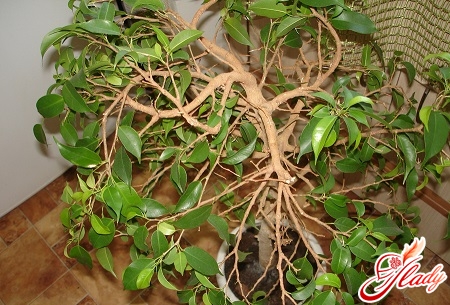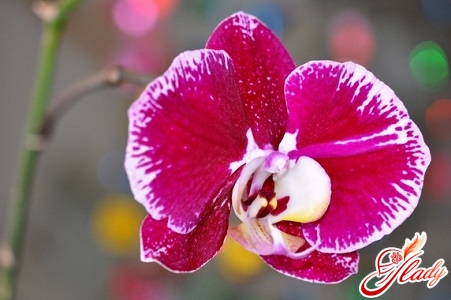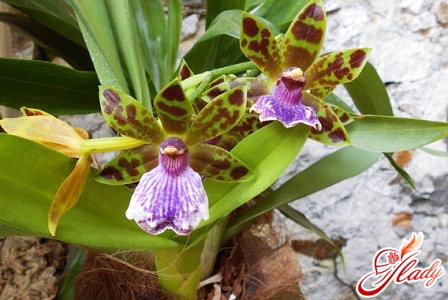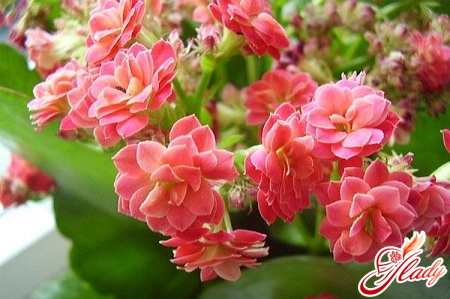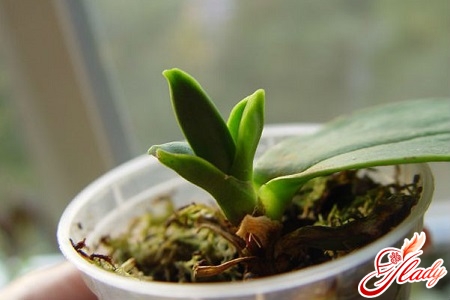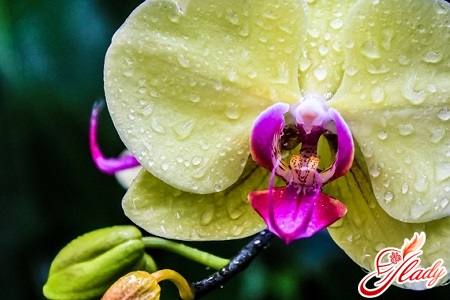 Roses have been known since ancient times.Carved from stone, they have been preserved in the monuments of Babylon and Assyria. The earliest image of a rose found in Europe on the frescoes of the Knossos Palace in Crete dates back to the 16th century BC. This flower came to Ancient Greece from the East after Alexander the Great conquered the Persian Empire. It was praised by the great poets of antiquity – Homer and Sappho. Herodotus described a sixty-petal rose from the garden of the Phrygian king Medas. Roses were imported to Ancient Rome from Egypt. Nero once gave a ton of gold for flowers from Alexandria. They paved the path of victorious commanders, and garlands decorated triumphal arches. In the houses of patricians, participants in feasts were showered with rose petals, many flowers were laid out on the tables so that their aroma suppressed the effect of wine vapors. And rose water was used for pools and fountains. In our climate zone, only rose hips and park roses do not freeze without winter shelter. In many well-known varieties of roses, even under winter shelter, not only the upper parts of the shoots, but also the stems to the very base can freeze, and the pruning methods recommended by experts often remain only on paper. Therefore, experts offer rose lovers to flower growers, the best varieties of which have been tested in practice. They winter relatively well and therefore are most preferable for decorative landscaping of personal plots. Roses come from southern latitudes, therefore, even despite thorough care in the autumn-winter period, they freeze in most cases. To avoid damage to roses when growing in our climate zone, special attention should be paid to the selection of rose varieties for planting, giving preference to those that are damaged to a lesser extent in the winter.
Roses have been known since ancient times.Carved from stone, they have been preserved in the monuments of Babylon and Assyria. The earliest image of a rose found in Europe on the frescoes of the Knossos Palace in Crete dates back to the 16th century BC. This flower came to Ancient Greece from the East after Alexander the Great conquered the Persian Empire. It was praised by the great poets of antiquity – Homer and Sappho. Herodotus described a sixty-petal rose from the garden of the Phrygian king Medas. Roses were imported to Ancient Rome from Egypt. Nero once gave a ton of gold for flowers from Alexandria. They paved the path of victorious commanders, and garlands decorated triumphal arches. In the houses of patricians, participants in feasts were showered with rose petals, many flowers were laid out on the tables so that their aroma suppressed the effect of wine vapors. And rose water was used for pools and fountains. In our climate zone, only rose hips and park roses do not freeze without winter shelter. In many well-known varieties of roses, even under winter shelter, not only the upper parts of the shoots, but also the stems to the very base can freeze, and the pruning methods recommended by experts often remain only on paper. Therefore, experts offer rose lovers to flower growers, the best varieties of which have been tested in practice. They winter relatively well and therefore are most preferable for decorative landscaping of personal plots. Roses come from southern latitudes, therefore, even despite thorough care in the autumn-winter period, they freeze in most cases. To avoid damage to roses when growing in our climate zone, special attention should be paid to the selection of rose varieties for planting, giving preference to those that are damaged to a lesser extent in the winter.
Portland roses
Modern rose enthusiasts are notpioneers, but only continuers of the interrupted wave. In Russia, roses also once bloomed. For example, in 1912, in the Moscow region, near the Tuchkovo station, an alley of eight thousand rose bushes was planted. History has not preserved the memory of what roses were planted there, but it certainly could not have done without a group of Portland roses. Compact growth, remontant flowering, excellent winter hardiness, good health and a strong aroma - this is an incomplete list of the advantages that characterize these roses. In France, these roses were bred in the middle of the 19th century. They got their name not from the city of Portland, although it is known today as the "city of roses", but in honor of the Countess de Portland - a passionate admirer of roses. If you have little space in your garden, but you definitely want to plant a rose, then choose the Jacques Cartier variety. This healthy, winter-hardy, abundantly flowering rose is incredibly beautiful. The flowers are a rich pink with a large abundance of small petals surrounding the core. This is an old rose variety, and unlike many such varieties, Jacques Cartier tolerates rain well, because the petals are arranged in such a way that water simply flows off them. The rose blooms in dense clusters of up to five pieces and is good for cutting. Jacques Cartier blooms in waves, until winter, abundantly repeating every month and a half. And pruning faded flowers speeds up the next wave of flowering. The bush is compact, tall and narrow. The plant has dense dark green foliage.
Pink Panther
Rose Pink Panther will leave no one behindindifferent. It would be more correct to call this beautiful hybrid tea rose grandiflora, because its large flowers usually bloom in clusters. They have a beautiful salmon-pink color, which from slightly orange at the beginning of flowering turns into more pink later. But the shade is always very beautiful. The flowers do not fade from the sun and withstand rain well. The vigorous bush is very hardy and has gray-green foliage. The variety is well resistant to black spot in the conditions of northern Europe and its humidity. In warm countries of Europe, the color of the flowers of this variety varies slightly, but in cold countries this contrast becomes very significant. Large beautiful flowers have a goblet shape, and the buds in them consist of more than forty petals. The rose has a light fruity aroma and blooms all summer, until late autumn. The flowers do not fade for a long time and at the end of flowering, before the petals fall off, they resemble peonies. The Pink Panther rose looks better in dry climates because the petals turn brown when rain falls. The bush's vigorous vines reach a height of one to one and a half meters, and the foliage is shiny and bronze.
Madame Meyland
Everyone knows Madame Meilland's rose, although in GermanyHer name is Gloria Dei, in Italy - Goya, and in English-speaking countries Peace. This is perhaps the most famous rose in the world, probably still the most common. The rose was named by its hybridizer in honor of its mother, who died young. The flowers of this rose are huge. They are very beautiful at all stages of flowering - from elegant buds to a fully opened flower. Usually the flowers are a soft yellow color with a crimson edge, which fades to pink-cream. In practice, the color changes depending on the place of cultivation and the time of year. The smell also depends on these conditions. The variety has a vigorous bush, dark green large foliage and is resistant to diseases. The bush looks good even when the rose is not blooming. This is a very easy to grow frost-resistant rose. Double large flowers of pale yellow color with a pink edge look very luxurious.
Roses Cordesa
Cordes roses are rightly called the queens amongflower world. Their beauty, grace, variety of colors and shapes are truly inexhaustible and conquer the hearts of all flower growers. Among them, they are known for the beauty of the bud and the flower itself, extraordinary aroma and amazing vitality. These wonderful roses delight rose growers with their lush flowering. Today, many roses of this variety of foreign selection have appeared, the flowers of which have a wide variety of colors and shapes, but the best varieties of Kordes roses are those that have stood the test of time and have proven themselves well in our climate. Kordes roses include the best frost-resistant varieties of roses. In general, most Kordes roses are frost-resistant, which is an important condition for our climate. Kordes roses do not require special care. Everything is traditional here - watering, fertilizing, weeding, spring pruning and essential mulching.
Pierre de Ronsard
Pierre de Ronsard's flowers have charmold roses. Large cup-shaped flowers with long petals open slowly. In humid and cool climates, they rarely open completely. The flowers themselves are cream or ivory in color with rich pink edges. The outer petals often have a greenish tint. The Pierre de Ronsard bush is compact and not very vigorous, the foliage on it is hard, dark green, shiny, there are few thorns. The first flowering is the most abundant - then the bush is covered with flowers from bottom to top. Then flowers appear constantly, but there are much fewer of them.
Iceberg
This variety has pure white flowers with a diameter ofseven to eight centimeters. Double buds have up to thirty petals and are collected in inflorescences of three to eight flowers. This variety has a light aroma. The leaves are shiny, dense, light green. A strong dense bush has a height of 0.8-1.0 m. This variety begins to bloom in mid-June and blooms with short breaks until frost. The variety is quite frost-resistant. In our climate zone, most often only the upper parts of the shoots freeze, so for the winter it is enough to hill the bushes with earth to a height of 0.3-0.4 m, and in the spring cut the shoots above the fourth or fifth eye from the ground. After this, new shoots quickly grow, which will bloom already in the current year. Three-year and older shoots must be cut in the spring at the base - this rejuvenates the plants and blooms much more abundantly. The variety is quite resistant to fungal diseases. This magnificent, abundantly flowering variety from the floribunda group looks great in flower beds, in group plantings and looks very impressive on standard plants. Recently, a kidney mutation from the above-described variety has become famous, which, without a doubt, deserves the attention of amateur gardeners. This is a climbing Iceberg. Its bushes, 2.5 m high, are densely covered with deep green foliage. This variety also begins to bloom from the second decade of June until frost. The variety is winter-hardy, and only in winters with prolonged subzero temperatures do the tops of its shoots freeze. It is enough to hill up the bushes with earth for the winter. In addition, the shoots can be carefully bent to the ground and secured in this position with wooden pegs, covered with wooden shields or covered with leaves. Covering will make it possible to preserve the maximum number of flower buds on the shoots in order to achieve abundant flowering next year. In spring, you need to cut off the tops of the shoots damaged by fungal diseases or frost. And shoots three years and older, so that the bush rejuvenates in a timely manner, are cut off at the base. This variety of Iceberg is also resistant to fungal diseases. Climbing Iceberg is great not only for vertical gardening, but also for cutting flowers.
New Don
This variety has double, soft pink flowers.with a diameter of six to seven centimeters. The buds have up to thirty petals and exude a pleasant apple aroma. Flowers are only rarely single, most often they are collected in inflorescences of five to seven flowers. The leaves are leathery, small, dark green and consist of five to seven rounded leaflets. The variety is vigorous, and the bushes have arched strong shoots up to two meters or more. Roses of this variety begin to bloom in mid-June and bloom until frost. New Don is a very frost-resistant variety, and from the group of climbing roses is the best autumn variety. In severe winters with prolonged subzero temperatures, only the tops of the shoots freeze. For the winter, it is enough to hill up roses to a height of 0.35-0.4 m, and in the spring, cut off the tops of the shoots damaged by frost. In order for the bush to rejuvenate in a timely manner, shoots three years and older must be cut at the base. The variety is resistant to fungal diseases and is recommended for planting on lawns as single specimens, in small groups, and also for vertical gardening.
Paul Scarlet Clymer
Paul's Scarlet Clymer roses are doubleBright red flowers of spherical shape with a diameter of up to seven centimeters. Slightly fragrant buds with up to forty petals are collected in inflorescences of ten flowers. The petals retain their color well and do not fade in the sun. Large shiny dark green leaves consist of three to seven leaflets. The bushes have strong thick shoots up to one and a half meters high and higher. These roses bloom in June from the second decade and bloom abundantly for 28-35 days. Further, repeated flowering is less abundant. The variety is winter-hardy - only the upper parts of its annual shoots freeze in winter. For the winter, it is enough to just hill the bush with earth to a height of 0.35-0.4 m. In regions with long and cold winters, the shoots should be carefully bent to the ground, securing them with wooden pegs in this position, and then covered with wooden shields or sprinkled with leaves. This will allow you to preserve the maximum number of flower buds on the shoots and achieve abundant flowering next year. The variety is resistant to fungal diseases. This rose belongs to the group of semi-climbing roses and is very good for planting single specimens or small groups against the background of a lawn. It is also suitable for cutting flowers.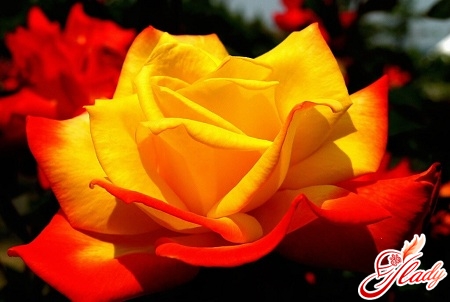
Maygold
The Maygold rose variety has a fragrant aromasub-double flowers of bronze-yellow color, cup-shaped, up to ten centimeters in diameter. Buds, which have up to seventeen petals, are collected in inflorescences of up to ten flowers. Large dark green shiny leaves consist of five to seven leaflets. Bushes of this variety have wicker shoots up to two meters high. This rose begins to bloom in mid-June and blooms until late autumn with short breaks. The variety is frost-resistant. For the winter, it is enough to hill the bushes to a height of 0.3-0.4 m with soil, and in the spring, the shoots should be cut above the fourth or fifth eye. Then their powerful young shoots quickly grow back and bloom in the current year. Shoots aged three years and older must be cut at the base in the spring, which allows the plant to rejuvenate. And it blooms much more abundantly. The variety is resistant to fungal diseases. Maygold is a semi-climbing variety that looks great planted in small groups and is also very effective on standard stems. The variety is suitable for cutting flowers.
Ankl Walter
Uncle Walter roses are doubleVelvety dark red large flowers, up to twelve centimeters in diameter. Slightly fragrant buds, which contain up to thirty petals, bloom singly or collected in inflorescences of up to eight flowers. Rose petals retain their color well and do not fade in the sun. Leathery, large, dark green leaves consist of five to seven leaflets. Bushes with straight, strong, dense shoots have a height of up to one meter. The Uncle Walter rose blooms with short breaks from mid-June until late autumn. The variety is winter-hardy. For the winter, the bushes can be hilled with earth to a height of 40 cm, and with the onset of spring, the shoots can be cut above the fourth or fifth eye from the ground. This procedure promotes the growth of powerful young shoots that bloom in the current year. Shoots aged three years are cut in the spring at the base, which helps the plant rejuvenate and contributes to much more abundant flowering. The Uncle Walter variety is resistant to fungal diseases. It belongs to the hybrid tea group of roses and is excellent for both cutting flowers and group plantings.
Dame de Coeur
Rose Dame de Coeur has large, densely doubleCherry-red flowers are cup-shaped, with a sharp center, up to twelve centimeters in diameter. Slightly fragrant buds have up to sixty petals and most often grow singly. Flowers retain their color well and do not fade in the sun. Large shiny leaves are dark green. Compact bushes up to one meter high have thick, straight, strong shoots. The Dame de Coeur variety blooms with short breaks, from the second ten days of June until late autumn. The variety is winter-hardy. For the winter, bushes should be hilled with earth to a height of 0.3-0.4 m, and then in the spring you need to cut the shoots above the fourth or fifth eye from the ground. After this procedure, the rose grows new powerful shoots that bloom in the current year. Shoots aged three years or more should be cut at the base in the spring, which helps the plant rejuvenate and bloom much more abundantly. The Dame de Coeur variety is resistant to fungal diseases. This variety belongs to the hybrid tea group of roses. It is recommended for growing for cutting flowers and for use in group plantings.
Queen Elizabeth
Rose Queen Elizabeth has large doubleDelicate pink cup-shaped flowers up to twelve centimeters in diameter. Fragrant buds have up to thirty petals, grow singly or collected in inflorescences. Strong straight shoots up to one and a half meters high grow in a bush. Rose Queen Elizabeth blooms with short breaks, from mid-June until late autumn. The variety is winter-hardy. Bushes for the winter need to be hilled up to 0.4 m with soil, and in the spring, shoots should be cut above the fourth to sixth eye from the ground. After this, this rose quickly grows powerful young shoots, blooming already in the current year. The variety is resistant to fungal diseases. Queen Elizabeth is a profusely flowering variety from the grandiflora group, which is grown for cutting flowers or planted in group plantings.
Ravel
The Ravel variety is one of the hybrid tea varietiesgroups. Double large delicate pink flowers of a goblet shape, with a high center, have a diameter of up to twelve centimeters. There are up to thirty petals in a bud. The buds grow singly or rarely two or three flowers on a shoot. Bushes with straight shoots up to a meter high are densely covered with deep green foliage. This variety blooms with short breaks, from mid-June until autumn. The variety is winter-hardy and the bushes for the winter are quite simply hilled up to a height of 40 cm above the ground. In the spring, the shoots should be cut above the fourth or fifth eye from the ground. After this, powerful young shoots quickly grow on the bushes. Shoots up to three years old should be cut at the base to rejuvenate the plant and achieve abundant flowering. The variety is also resistant to fungal diseases. Experts recommend using the Ravel variety in group plantings, as well as growing it for cut flowers. Cut flowers can be stored in water for up to three weeks.




